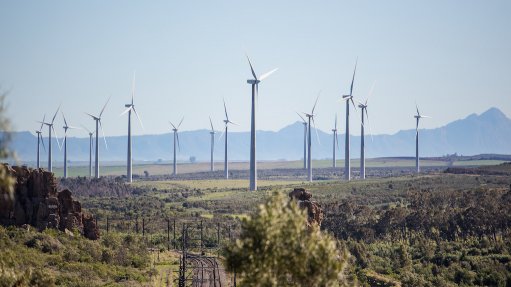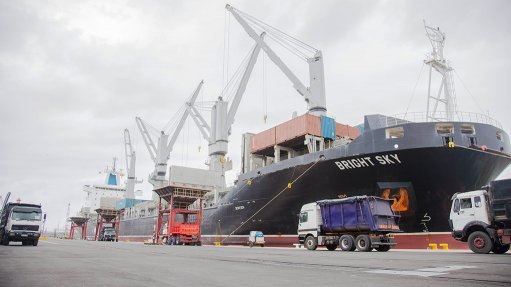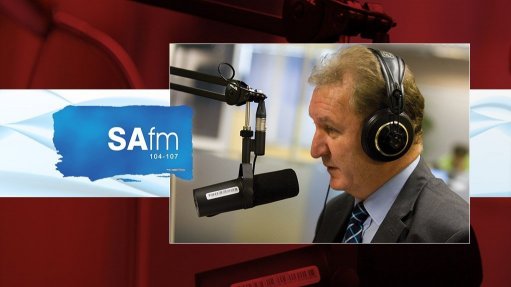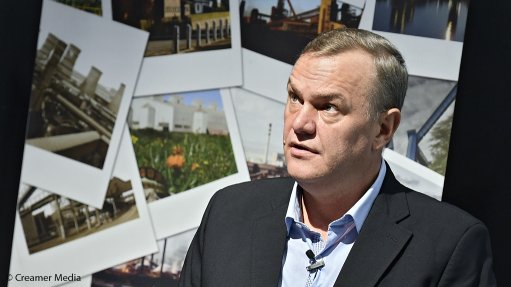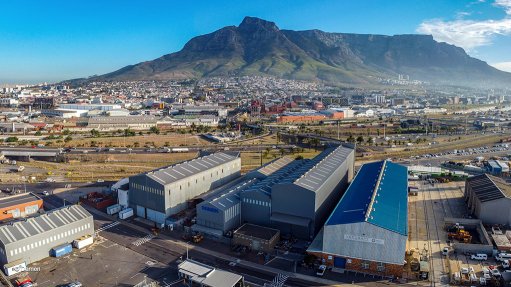Polystyrene panels in cold storage facilities a fire risk
This article has been supplied as a media statement and is not written by Creamer Media. It may be available only for a limited time on this website.
In examining fire-safety issues related to polystyrene panels in cold storage, it is crucial to consider international standards and the inherent risks associated with this material, according to ASP Fire CEO Michael van Niekerk. “American codes, particularly those from FM Global, explicitly advise against using polystyrene in construction due to its combustibility,” notes van Niekerk.
Polystyrene begins decomposing at approximately 150°C, releasing styrene, a flammable vapour that can ignite once formed. The primary concern with ISO panels, which often have polystyrene cores, is their construction consists of a sandwich of two metal sheets encasing the polystyrene. The challenge is that the two metal sheets prevent water from being applied to the burning polystyrene, which will burn unchecked. The core can vary, with options like fire-retardant polystyrene, polyisocyanurate (PIR or ISO), and Rockwool, a non-combustible material made from melted stone.
“Insurers are typically hesitant to cover buildings constructed with any type of polystyrene without sprinkler protection,” highlights van Niekerk. The aim is to prevent fires from spreading into the polystyrene panel which, once ignited, is difficult to extinguish due to the metal casing. Although fire-retardant polystyrene exists, which self-extinguishes when the flame source is removed and does not spread the fire, insurers often remain sceptical.
Polystyrene engineered to require a higher oxygen content at 34% to burn, compared to the 21% oxygen level in the air, offers enhanced safety. However, insurers may not always appreciate these advancements, often due to a lack of engineering expertise.
Van Niekerk recommends that clients constructing cold storage facilities consult with their insurers early in the planning process to reach a consensus on the materials used, potentially avoiding the need for expensive sprinkler systems.
This proactive approach is particularly important for one-storey buildings where high storage necessitates sprinklers. Despite engineered polystyrene being safer, fire engineers and insurers still prefer non-combustible alternatives due to the uncontrollable nature of polystyrene fires.
Cost often drives the decision to use polystyrene, as it is cheaper than non-combustible materials. However, this can be a false economy if extensive sprinkler systems are then required. “Engaging a fire engineer before construction can help balance costs and safety, designing out unnecessary expenses,” stresses van Niekerk.
At present there are no specific South African regulations comparable to the stringent American FM Global standards, which prohibit plastics in construction. South African codes focus on structural stability, covering steel and concrete columns, but do not address the use of combustible materials in building skins. This regulatory gap leads insurers to insist on sprinklers, unaware that the building’s fabric itself meanwhile is more combustible, increasing the fire risk.
Van Niekerk concludes that while polystyrene panels are cost-effective and can be engineered for safety, they pose significant fire hazards. Effective fire safety planning and early consultation with insurers are essential to mitigate these risks and ensure compliance with safety standards.
ASP Fire
Comments
Announcements
What's On
Subscribe to improve your user experience...
Option 1 (equivalent of R125 a month):
Receive a weekly copy of Creamer Media's Engineering News & Mining Weekly magazine
(print copy for those in South Africa and e-magazine for those outside of South Africa)
Receive daily email newsletters
Access to full search results
Access archive of magazine back copies
Access to Projects in Progress
Access to ONE Research Report of your choice in PDF format
Option 2 (equivalent of R375 a month):
All benefits from Option 1
PLUS
Access to Creamer Media's Research Channel Africa for ALL Research Reports, in PDF format, on various industrial and mining sectors
including Electricity; Water; Energy Transition; Hydrogen; Roads, Rail and Ports; Coal; Gold; Platinum; Battery Metals; etc.
Already a subscriber?
Forgotten your password?
Receive weekly copy of Creamer Media's Engineering News & Mining Weekly magazine (print copy for those in South Africa and e-magazine for those outside of South Africa)
➕
Recieve daily email newsletters
➕
Access to full search results
➕
Access archive of magazine back copies
➕
Access to Projects in Progress
➕
Access to ONE Research Report of your choice in PDF format
RESEARCH CHANNEL AFRICA
R4500 (equivalent of R375 a month)
SUBSCRIBEAll benefits from Option 1
➕
Access to Creamer Media's Research Channel Africa for ALL Research Reports on various industrial and mining sectors, in PDF format, including on:
Electricity
➕
Water
➕
Energy Transition
➕
Hydrogen
➕
Roads, Rail and Ports
➕
Coal
➕
Gold
➕
Platinum
➕
Battery Metals
➕
etc.
Receive all benefits from Option 1 or Option 2 delivered to numerous people at your company
➕
Multiple User names and Passwords for simultaneous log-ins
➕
Intranet integration access to all in your organisation






